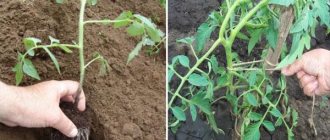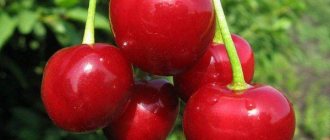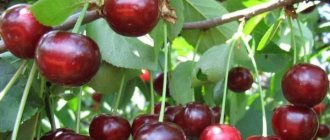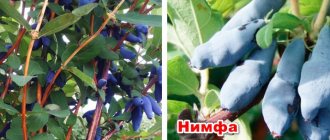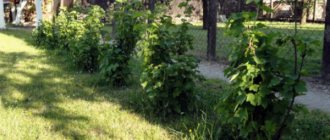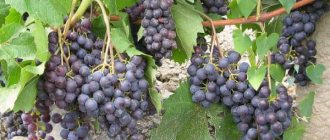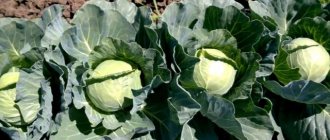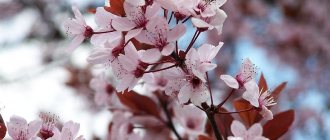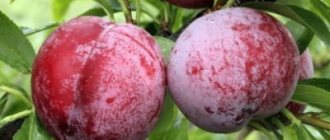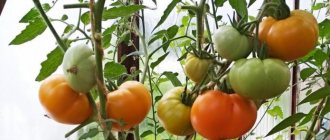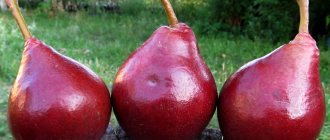History of variety development
Molodezhnaya cherry is a relatively young variety - it was bred by Russian scientists in the last quarter of the last century. And after the tests, this cherry was included in the State Register of Russia in 1993.
This cherry was created by breeders from the All-Russian Breeding and Technological Institute of Horticulture and Nursery Growing H. Enikeev and S. Sattarova.
The following cherry varieties were used to develop a new variety:
- Lyubskaya;
- Vladimirskaya.
This cherry variety is recommended for cultivation in the central Russian regions, as well as in the Urals.
Cherry Molodezhnaya - photo
Cherry Molodezhnaya: characteristics and description of the variety
The Molodezhnaya cherry rarely grows more than 2 m in height, and its shoots tend to the soil surface.
Therefore, harvesting from these stone fruit trees is very easy and simple. The shoots are often intertwined, but almost never break under the load of the ripening berry crop.
The crown of this tree is round and of medium density. The bark of the trunk and main shoots is brownish-brown, becoming darker in color with age. The flowers are small in size (no more than 3 cm in diameter), collected in inflorescences of 4-6 pieces. The petals are boiling white. The pistil and stamens of the flowers are at the same height, so the Molodezhnaya cherry tree is self-pollinating
. The buds bloom in the second ten days of May.
Ripe cherries – 1 cm in diameter, weighing up to 5 g.
The shape of ripe fruits is oval, dark burgundy. The pulp is sweet, juicy with a slight sourness.
On a note!
According to tasters, the berries of this variety received 4.5 points.
The stone is small in size and easily separated from the ripe pulp. Thanks to their tight skin, the harvested fruits tolerate transportation well over long distances and can be stored in appropriate conditions without losing their taste and appearance for up to 2-3 weeks.
Photo of Molodezhnaya cherry
Mature trees are highly resistant to periods of drought. But planted seedlings require regular watering throughout the entire season after planting.
Molodezhnaya cherry is highly frost-resistant, so it is successfully grown in central Russia and the Urals.
The ovaries are resistant to night cold snaps.
Harvesting and storage conditions
Harvesting is usually possible in the second or third decade of July. In general, the variety stores very well, thanks to its thick skin and fleshy pulp. It is best to select strong berries for storage without the slightest damage. These same qualities make the variety a good choice if you have to transport fruits over a long distance.
Area of application of berries
The scope of application of Molodezhnaya cherries is simply enormous. It is perfect for making jam, marmalade or marmalade. It is also often used for drying - the fleshy pulp dries out relatively weakly. Yes, and it is certainly possible to freeze the fruits in order to get them in winter and use them in their pure form or as compotes, providing vitamin supplementation.
Excellent for workpieces
Pollinator trees for Molodezhnaya cherries
Molodezhnaya cherry is classified as a self-pollinating variety - up to half of the harvest is formed from its own pollen.
But if other varieties of cherries with a similar flowering period are planted nearby, pollination will be more active, resulting in an increase in the yield of the variety.
The best pollinating varieties for Molodezhnaya cherries are:
- University;
- North Star;
- Lyubskaya;
- Turgenevskaya;
- Different varieties of cherries with similar flowering periods.
Youth can serve as a good pollinator for cherry varieties with later fruit ripening. Buds appear even on young branches.
The harvested harvest is distinguished by its versatility: cherries can be eaten fresh, used for making jam and canning compotes for the winter. Also, the collected fruits can be frozen for the winter, while the berries do not lose their taste.
Cherry Molodezhnaya - video
Pollinator Species, Best Neighbors
In general, there are usually no problems with pollination. The pistils and stamens are located at the same height, due to which about 40% of the flowers are self-pollinated. In addition, Molodezhnaya is perfect if you need to pollinate most late varieties of cherries.
But so that she herself receives enough pollen and brings maximum yield, a good choice would be:
- Nord-star,
- Turgenevskaya,
- Vuzovskaya,
- Lyubskaya.
Apple trees and grapes can become good neighbors for Molodezhnaya cherries.
On a note! You can use almost any variety of cherries - this will further improve the taste of the fruit.
But it’s better not to plant it next to other cherries. As mentioned above, the variety has low resistance to fungal diseases. That is, it is enough for one tree to become infected and the infection will spread to all neighboring ones. Therefore, it is better to grow them at a certain distance or dilute them with other crops. This is a simple and reliable way to save cherries from disease, and yourself from unnecessary problems.
Productivity of the Molodezhnaya cherry variety
The first harvest from trees of this variety can be harvested 4-5 years after planting the seedlings in a permanent place.
With good care, Molodezhnaya cherries consistently bear fruit for at least 15-17 years. Regular pruning of shoots has a positive effect on the yield level.
From the age of 6-7, you can collect up to 10-15 kg of ripe, tasty berries from each Molodezhnaya cherry tree.
The berries ripen by the end of July. The fruits cannot ripen once they are picked from the tree, so the berries must be picked when fully ripe. But you should remember that even overripe fruits are firmly attached to the stalks and do not fall off, so it is important not to miss the moment of their ripening. After all, the taste of overripe cherries deteriorates.
Advantages of the variety
Despite the fact that Molodezhnaya cherry is a relatively young variety, it is already quite popular in many regions.
The main reasons for this are the large number of advantages of the Molodezhnaya cherry variety:
- planted trees begin to bear fruit after just a few seasons;
- high productivity;
- ripe berries are large in size;
- The taste of ripe fruits is dessert-like, highly rated by tasters;
- ripe cherries tolerate long-distance transportation well;
- trees of the Molodezhnaya cherry variety are self-pollinating, however, to increase productivity, it is recommended to plant other varieties of cherries and sweet cherries with the same flowering periods nearby;
- The variety is resistant to frost, and the ovaries tolerate spring frosts well;
- high resistance to periods of drought, however, during the fruiting period it is necessary to adhere to the irrigation regime.
But, when planting this variety of cherries on your site, you need to remember about its disadvantages:
- This cherry has average resistance to fungal diseases;
- this variety is demanding on the place of growth;
- if there is not enough fertilizer in the soil, the yield of Youth Cherry will decrease;
- The shoots grow quickly, so they require regular pruning.
Care
Proper care of cherries contributes to the good development of the tree and a rich harvest of tasty and juicy berries.
Hole care
For good tree development, the hole around the trunk must always be clean. Weeds must be pulled out by hand or mowed. Weeding and digging up soil in the area near the trunk is not recommended. Cherry roots are located in the top layer of soil, so when removing weeds this way, you can accidentally damage the root system of the tree.
Watering
Youth cherry is a drought-resistant crop, so the tree does not require frequent irrigation. The main watering during tree growth and development is carried out during the following periods:
- after flowering;
- during the formation of the ovary (June);
- after harvest or in the first ten days of September;
- second half of October (pre-winter watering).
Water at the rate of 50-70 liters of water per tree. Moisture should saturate the soil to a depth of 40-60 cm.
It is impossible to water a cherry tree often, as excess moisture causes root rot and growth stagnation.
Trimming
- Pruning young trees involves the correct formation of the crown. Leave 8-12 strong, well-developed branches growing in tiers in different directions. If the tree has reached 2.5 m in height, the crown is cut off. The cut areas must be treated with garden varnish.
- In subsequent years, trees are pruned if the growth is 20-40 cm. In this case, light thinning and removal of dry and damaged branches are carried out.
Cherry trees are pruned annually in early spring, before the buds swell.
- If the annual growth of mature trees does not exceed 30 cm, more thorough anti-aging pruning is carried out. Remove weak branches pointing upward. Shorten or remove lower and strongly drooping branches. Large ones are cut into a ring.
- All branches longer than 50 cm are shortened by ¼. To prevent excessive thickening of the crown, the tree is molded - the upper part of the cherry is shortened by 40-60 cm.
In case of strong thickening, it is necessary to thin out the crown in stages. If you cut many branches at the same time, you can provoke gum bleed, which will cause the tree to dry out.
Preparing for winter
Preparation for the winter season involves protecting the tree from rodents and exposure to low temperatures.
To combat rodents, special traps or baits are placed in the garden area. To prevent hares from damaging the bark, tree trunks are tied with a special garden net.
The trunks are wrapped with a fine mesh about 130 cm high; ideally, it should be buried 30 cm into the soil
Despite the fact that Molodezhnaya cherry is highly frost-resistant, it is still advisable to whiten the trunk, skeletal branches and trunks with slaked lime or special garden paint. The circle around the trunk is mulched with a layer of peat, compost, manure, or the hole is covered with fresh pine needles.
Feeding and fertilizer
For proper development, the cherry tree needs adequate nutrition. To do this, regularly fertilize and feed the plant.
| Season | Type of feeding | Period | Facilities |
| Spring | root | before flowering (April) | When digging a circle around the trunk, 20-30 g of ammonium nitrate are evenly scattered (per 1 sq. m of area). |
| during flowering (May) | Prepare a mineral solution in the following proportion: 15 g of urea and 25 g of superphosphate per 10 liters of water. Water at the rate of 5 liters per tree. | ||
| after flowering | Mullein solution: 1 bucket of mullein is dissolved in 5 buckets of water, add 1.5 kg of wood ash and leave for 5 days. Half a bucket of solution is poured under each tree and immediately watered with clean water (at least 25 liters). | ||
| Summer | foliar | June 15-30 | Solutions containing potassium and phosphorus. Nitroammophoska, potassium chloride, potash (potassium carbonate), ammophos, potassium monophosphate. Prepare according to instructions. |
| Autumn | root | end of September | A layer of peat, humus or compost 5 cm thick is placed on the area near the trunk, and 30-40 g of ammonium sulfate per 1 square meter is evenly scattered on top. m. A layer of earth is poured on top - 5-10 cm. |
Important! Fertilizer is selected depending on the condition of the plant, climatic conditions and soil acidity.
Root feeding of young trees is carried out annually; after reaching the age of seven, the trees are fertilized once every 2-3 years.
Protection from diseases and pests
To prevent damage to the tree and fruits, it is necessary to regularly carry out preventive control of pests and diseases.
Preparations for protecting cherries from pests (table)
| Period | Pests | Protective means, treatment period | Prevention |
| Before flowering |
| Aktelik, Ambush – 1 time in March. |
|
| goldentail | Karbofos solution 0.3% - 1 time in April. | ||
| ticks | Anti-mite, Tsifoks - sprayed 2-3 times every 10 days. | ||
| After flowering | weevil (pipe weevil) | Karbofos solution 7% or Trichlorometaphos-3. Spray 2 times with an interval of 7 days. |
|
| Sumition, Pirinex - sprayed twice with an interval of 15 days. | ||
| Growing season |
| Fufanon, Kemifos - sprayed 1 time. Repeatedly - after 15 days, if the pest is not destroyed. |
|
| spider mite | Aktelik - sprayed twice with an interval of 15 days. | ||
| cherry fly | Diazinon, Spinosad - sprayed during the period of flies and egg laying (late May and mid-July). | ||
| After harvest and after leaf fall | rodents | Storm, Clean House. Briquettes or granules are placed in holes or in special baits. | Rodents are repelled by wood ash, peat chips, sawdust soaked in creolin or kerosene, scattered in the tree trunk. |
Means of protection against diseases (table)
| Period | Diseases | Protective means, treatment period | Prevention |
| Before flowering |
| Topaz, Fitosporin - sprayed twice with an interval of 10-12 days. |
|
| After flowering |
| Skor, Horus, colloidal sulfur - sprayed twice with an interval of 10 days. |
|
| Growing season |
| Horus, Fitosporin - twice with an interval of 7-10 days. |
|
During preventive treatment, only one chemical agent is used; several drugs cannot be used simultaneously. Insecticidal treatment is carried out only if a pest is present.
Important! Do not mix drugs; the time interval after each treatment should be at least 10-14 days.
Medicines against diseases and pests (gallery)
Tsifoks against ticks
Horus in the fight against clusterosporiasis
Fufanon against codling moth
Fitosporin fights many cherry diseases
Topaz for moniliosis, powdery mildew and a number of other diseases
Aktelik against spider mites and other pests
Pest control (video)
Cherry Molodezhnaya: planting seedlings
It is best to plant the Molodezhnaya cherry variety in a permanent place in the garden in early spring, when the buds of the seedlings have not yet begun to swell. Trees planted at this time will have time to acclimatize during the summer season, and their root system will quickly grow. As a result, by winter the tree will become stronger and will not freeze even in severe frosts.
If you plan to plant several seedlings, then the distance between adjacent holes should be at least 2.5 m, and the row spacing should be more than 3 m.
The best place for this cherry is a well-lit area, protected from gusts of cold wind and drafts. It is best to plant it on the south or southwest side of garden plots next to buildings that will protect the plants from gusts of wind.
This cherry tree grows best on sandy loam soils with a neutral or slightly alkaline reaction. The soil should be loose and fertile, so areas with stagnant moisture, as well as with close groundwater, are not suitable for Molodezhnaya cherries.
Varieties of Berries!
Cherry Fatezh Cherry Ovstuzhenka Cherry Leningradskaya black
1-1.5 months before planting the Molodezhnaya cherry, planting holes should be prepared for the seedlings.
The diameter of the hole is 0.4 m, and the depth is 0.6 m. In the fall, compost or humus is added to the digging at the rate of 5-6 kg per 1 m2 of area. In the spring, a layer of drainage 4-5 cm thick is laid on the bottom of the holes, then a layer of nutrient substrate, into which superphosphate and potassium salt should be added.
It is also important to choose a healthy, strong seedling. Its age should be 2 years; older trees will not take root well.
The main criteria for choosing planting material for Molodezhnaya cherries:
- height – 90-100 cm;
- root length – 15-17 cm or more;
- branches and roots must have no visible damage and be elastic;
- foliage – without damage, rich emerald color;
- the bark of the trunk and shoots is even and smooth, without cracks or other defects.
It is better to purchase planting material from nurseries.
Before planting, remove all foliage and damaged branches and parts of roots. The roots need to be soaked in a clay mash.
Interesting!
25 best varieties of cherries for Siberia
In the center of the pit, make a small mound of nutrient substrate, next to which a peg is driven. The seedling is placed on the top of a hill, the roots are spread along its slopes. The trunk of the tree is tied to a support, the hole is filled with earth, compacted layer by layer. The root neck of the cherry should be 4-6 cm above ground level.
A circle around the trunk is formed, along the edge of which a side is made of earth. It is needed to ensure that irrigation water does not leave the tree trunk circle. At least 20-25 liters of water are poured under each tree. A layer of mulch 4-5 cm thick is added to the tree trunk circle.
Progress of planting work
- 2 months before planting the Molodezhnaya cherry, a hole measuring 40x60 cm is dug and organic fertilizers are added to it.
- Before planting, we form a 10-15 cm hill at the bottom of the hole.
- We install a 130 cm stake in the central part of the hill.
- We place a Molodezhnaya cherry seedling next to the stake and spread its roots along the hill.
- We check that the root collar should rise 3-5 cm above the soil.
- Fill the hole with soil and compact it.
- We form a tree-trunk hole with a side made of soil.
- We tie up the seedling.
- Apply abundant watering.
- The hole is mulched after water has been absorbed.
The main thing is to correctly determine the location of the root collar (this is the transition of the roots into the trunk). If you make a mistake, the seedling will not survive.
The optimal way to determine the root collar: you need to move upward from the upper root by 3-4 cm.
Further care for Molodezhnaya cherries
In the first season, the main care for growing Molodezhnaya cherry trees consists of regular watering and loosening of the tree trunks.
You also need to remember that this cherry variety is prone to fungal diseases, so treatment should be started at the first symptoms.
This cherry tree needs to be watered once or twice a month, adding 2 buckets of water under each tree.
But at the same time, you need to ensure that moisture does not stagnate in the soil, as this can cause a fungal disease.
Interesting!
A selection of the best cherry varieties for the Moscow region
Diseases and parasites
Among the main diseases of Youth it is worth noting:
- Milky shine. When a plant encounters this disease, the leaves begin to acquire a pearlescent color and the wood turns brown. To combat this problem, special drugs are used. Damaged areas must be destroyed immediately.
- Gray rot. Young shoots and leaves begin to turn black and dry out. The fruits become covered with rotten spots containing spores. As soon as this problem is noticed, it is necessary to immediately remove the infected berries and leaves. As for processing agents, Bordeaux mixture is perfect.
- Phomopsiosis. The leaves begin to dry out and curl. The bark becomes darker and becomes covered with spots and cracks.
- Coccomycosis. A dangerous disease that very often infects Molodezhnaya. With coccomycosis, the leaves of the tree acquire a yellow-red tint, and then brown dots appear on their surface, and white-pink bumps appear on the reverse side. Ultimately, the disease leads to the fact that the winter hardiness of the cherry is significantly reduced and its berries become more bony.
- Anthracnose. As for this disease, during anthracnose the cherry fruits become covered with pale spots. Over time, the berries become mummified.
As for parasites, the main pests encountered by this cherry variety are:
- Leaf roller.
- Sawfly.
- Aphid.
- Cherry weevil.
- Shoot moth.
Prevention from pests and diseases
The general rules for preventive treatments of cherries against diseases and parasites are as follows:
- In the spring, when the temperature has risen to +5 degrees Celsius, the tree is treated with Bordeaux mixture (3%) and a solution of tar soap.
- When the cone has grown green, the plant is again treated with Bordeaux mixture, but this time 1%.
- When the bud begins to bloom, the tree is treated with a solution of boric acid, at a rate of 10 g per 1 bucket of water.
Feeding cherry trees
In the first season, the planted Molodezhnaya cherry does not need fertilizing, since all the necessary nutrients were added during planting.
In the future, it is necessary to apply fertilizers to the trunk circles of the Molodezhnaya cherry tree twice per season:
- in the spring, fertilizers containing nitrogen are applied;
- in the autumn, in preparation for winter - fertilizers containing phosphorus and potassium.
Also in the spring, it is necessary to add humus or compost to the tree trunk circle. These fertilizers help accelerate the growth of the tree and strengthen its immunity.
Why cherries don’t bear fruit - video about feeding trees
Subtleties of care and cultivation features
Cherries must be protected from hares and voles, which can cause significant damage to the root system. There is no need to poison animals or set traps; you can simply fence the plant with a thick stake or cover the hole so that you cannot get to the roots.
Feeding
In spring, it is best to feed cherries with mineral fertilizers. For this, there are such proven preparations as Izumrud, Biem for fruits or any other specialized one in the complex. It must be remembered that in the spring during the growing season, fruit trees devote a significant part of their energy to flowering, foliage and shoot growth. Potassium, nitrogen and phosphorus are extremely important in April - May. Be careful with ammonium nitrate, as too much can burn the root system.
It is important to apply the mineral complex before fruit set during the flowering period
The second time you need to feed the cherry after fruiting. Superphosphate and potassium chloride (4 tablespoons each) are diluted with warm water (15 liters) and poured into the tree trunk circle. Such fertilizing in the autumn will allow the tree to recover after it has devoted all its energy to ripening the berries.
In the fall, it’s a good idea to water the cherries once or twice with an infusion of chicken manure or mullein (organic matter with water in a ratio of 1:10).
You cannot add fresh manure, only rotted manure or liquid infusion.
Trimming
After the cherry tree has “woke up” from the winter cold, pruning can be done. It is optimal to remove all shoots from last year; ideally, about 12–14 shoots should remain on the bush. Where you cut it, be sure to cover it with garden varnish.
Cherry Youth needs annual pruning
All branches that grow chaotically, thicken the cherry tree and simply become longer than half a meter from the trunk - must be pruned. This must be done before the tree blooms. And the best time is in March - April.
In the fall, they mainly carry out not formative, but health-improving pruning. Remove all dry, fruit-bearing branches. Damaged areas are also treated and inspected. Perhaps they contain larvae or parasites that should be destroyed immediately. Since the crown of Molodezhnaya is quite spreading, after five years of age the upper branches should be pruned by half a meter. Shape the bush in a way that is convenient for you and for more productive berry picking.
A simple guide on how to trim a cherry tree - video
Cherry Molodezhnaya: reviews from those who grow the variety
Irina, 36 years old, Tomsk region: Molodezhnaya cherry has been growing in my garden for the 6th season, over these years the tree has never frozen in winter, and now it bears fruit for the third season. Moreover, the yield only increases from year to year. The taste of the fruit is simply excellent. We use the harvested harvest to make jam; my family really likes compotes made from this cherry, which I close for the winter.
Cherry varieties:
Zhukovskaya cherry Cherry variety Lyubskaya Cherry Shokoladnitsa
Nikolay, 53 years old, Sverdlovsk region: I really like that this cherry grows short - it’s easy to prune and harvest. Fruiting is stable, annual. Ripe berries tolerate transportation well and can be stored in appropriate conditions for up to two weeks, so there is no need to engage in emergency processing of the crop immediately after harvest.
Lyuda, 49 years old, Oryol region: When caring for Molodezhnaya cherries, the main emphasis is on the annual spring treatment of the tree against fungi. If necessary, I repeat spraying during the summer and autumn. And over the past 10 years, my trees have never gotten sick. Yields are stable and quite high. And among my neighbors, this cherry grows in the lowlands, I can note that the tree grows worse and does not produce very high yields.
Resistance to adverse factors, diseases and pests
As mentioned above, the Molodezhny variety is not afraid of most negative external factors. It tolerates both frosty winters and drought without harm. But cherries, on the contrary, do not like high humidity - the root system can rot, causing the plant to die.
Among diseases, infectious diseases can cause the most problems. Therefore, we should not forget about standard prevention - treatment with copper sulfate, collecting and burning fallen leaves. These same measures, by the way, can reduce the risk of attack by insect pests. But, of course, there must be some control - an ordinary aphid or weevil may well attack a tree left unattended.
